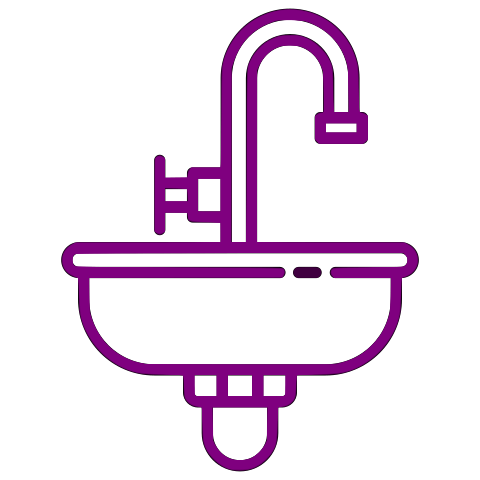
Toilet and Sinks
Drainage of your toilet and sinks can often lead to complicated problems if not installed correctly or in the correct way. Based on the location in your home different options should be considered.

Toilet and Sink drainage Cost Explained
Our promise is to always be fair honest and open on pricing. Toilet and sink drainage can vary based on the scale of the property size, condition and location it would be unfair of us to mislead you with a roundabout price. Therefore, we carry out a full on-site inspection before giving you our best price.
Toilet and Sinks
Understanding toilet and sink drainage
Bathrooms usually have more than one plumbing fixture, and it is inconvenient and expensive to run individual drain lines from each fixture to the house’s main sewer line. Instead, plumbers connect drain lines in the floor beneath the bathroom and install a common vent that allows water and waste to drain without forming a compartment. The toilet has the largest overflow, so the sink drain, which is smaller in diameter, will empty into the toilet drain line.
The toilet drains
-
Connect a 3-inch PVC closet bend to the bottom of the toilet overhang found in the floor where the toilet will sit. A closet bend is sweeping 90-degree elbow that connects the overhang to a 3-inch overflow that runs between the floor joists. There is no need to install a trap beneath the toilet because toilets have built-in traps.
-
Attach the open end of the closet bend to a horizontal 3-inch overflow. The drain runs horizontally only until it can descend to connect with the house’s main sewer line. The pipe is not perfectly horizontal; it should slope at the approximate rate of 1/4 inch per lineal foot. More slope is not necessarily better since liquid can outrun waste, leaving it stuck in the overflow.
-
Apply PVC prep liquid and PVC adhesive, as directed on each product’s label, when connecting PVC pipes and fixtures that are not threaded.
The sink drains
-
Attach a 2-inch sink trap assembly to the bottom of the drain stub that extends from beneath the sink. This is a threaded connection, and the trap should come with two washers, one on each end that slip over the connecting pipes and tighten. Do not glue these connections.
-
Connect a horizontal PVC pipe to the bottom end of the trap assembly. This pipe should be long enough to reach the stud space in the wall behind the sink where it will attach to another 2-inch vertical pipe.
-
Install a 2-inch sanitary-T fitting in the stud space to connect the horizontal sink drain to a vertical overflow. The vertical overflow serves two purposes; water drains downward, and the upper part of the pipe ties into the house’s main vent stack. Without the upper vent part of the pipe, water locks can form in the drain system. The sink vent serves both the sink and the toilet. .
-
Run the lower sink drain, adding elbows or collar connections as needed to reach the 3-inch overflow that runs from the toilet. The configuration depends upon your bathroom layout and the direction of the floor joists, but connect the sink drain to the toilet drain within 6 feet of the toilet, if possible.
The connection
-
Connect the sink drain to the toilet overflow using a 2-inch-to-3-inch sweeping-Y connector. The sink drain should enter the toilet drain from above, and the 2-inch opening for the sink drain should extend upward from the 3-inch horizontal drain to prevent backflow issues.
-
Cut a section out of the 3-inch overflow when tying in the 2-inch sink drain and use the PVC prep liquid and PVC glue to hold the connections securely.
-
Cap the end of the 3-inch drain before attaching it to the main sewer line, flush the toilet and fill the lines with water to test the pipe connections. This is the best time to discover if a connection leak.
Warning
If you cannot connect the sink drain to the toilet drain within 6 feet of the toilet, install a separate vent on the toilet drain line closer to the toilet. The farther the sink connection from the toilet, the more likely you are to experience clogs. The sink will still need a separate vent pipe.